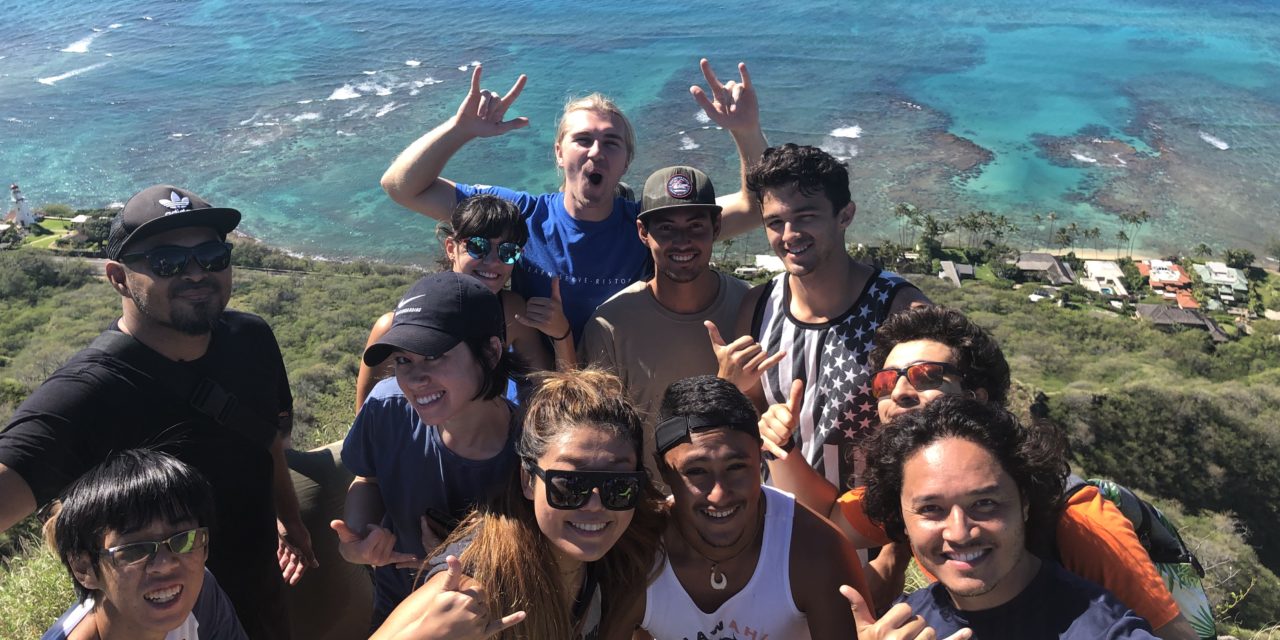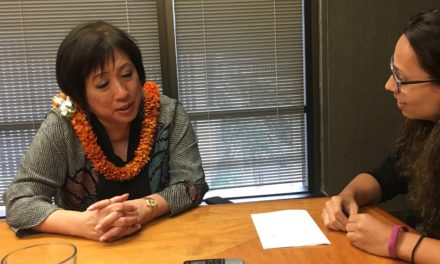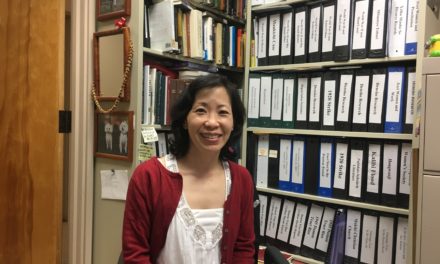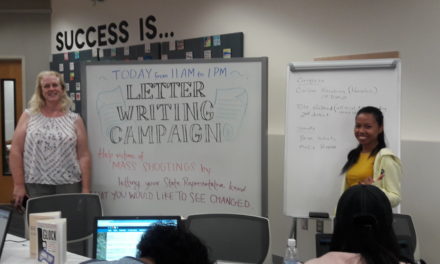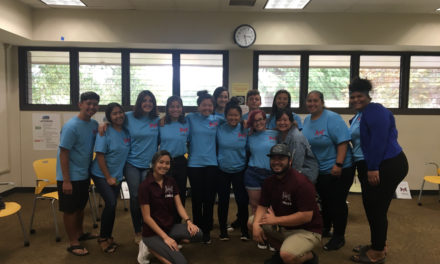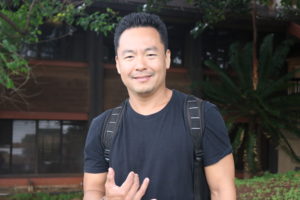By Lexus Yamashiro | Staff Writer
In the summer heat of 2018, KCC students Maverick Kaopio and Brandon Bernaldes found themselves hiking Kuli‘ou‘ou Ridge, Olomana, and Kaʻau Crater. Realizing that they could share their summer experiences by developing a way for those on campus to get together to hike, bond, and have fun, 22-year-old Kaopio and 32-year-old Bernaldes created the Haumana o Ka ʻĀina Leadership Organization (HOLO) Hiking Club in February.
Open to KCC students, faculty, and staff, the purpose of having HOLO Hiking Club on campus is what Kaopio, who serves as the club’s president, described can motivate individuals to get back into nature to maintain a healthy lifestyle while also incorporating ways to get involved with ecological and sustainability efforts.
“We want to be able to build leaders for the future but in regards to our club specifically it would be more towards getting people back into nature, biology, botany, and engineering and being able to mimic nature, really,” said Kaopio, who is majoring in Biomedical Engineering. “I feel like there’s a lot of things in nature that we’re disconnected from that are really basic, and being inspired by those things and being able to replicate them is what I would consider pretty great science. … Being able to live synergistically with our environment instead of separate is something I want to inspire.”
Since February, the club has gone hiking to Koko Head Crater, Diamond Head, Kaʻau Crater, Kaʻena Point, and Makapuʻu, each time consisting of about 10 participants. Being that the club is trying to make their hikes a learning experience for those who tag along, it hopes to bring knowledgeable individuals on board within the science and botany fields to share information such as native plants found along the trails. Until this happens, Bernaldes, who serves as the vice president, has been using a technique of his own to educate those who have participated so far.
“I like to look up to see if we can find any moʻolelo [stories], any interesting historical facts, maybe archaeological sites or some kind of story that’s attached to that area [we’re hiking] just as another thing to bring to the table so people can maybe walk away with some new information versus just going up and hiking,” said Bernaldes, who is majoring in Hawaiian Studies and Natural Sciences. “We’re trying to advance the experience in a sense of where it’s more than just a hike; it’s exercise and it’s a little bit of an educational experience as well.”
HOLO Hiking Club’s next outing is scheduled for Sunday at 9:15 a.m. at Hawaiʻi Loa Ridge. Those who are interested in participating can head straight to the hiking location or meet near the restrooms down by parking lot C to carpool. For those who would like to know when other hiking opportunities will arise, contact HOLO Hiking Club at holo.hiking@gmail.com.
As the club continues to find ways to incorporate educational and leadership opportunities through its activities, it does have plans for Fall 2019 that public relations officer Kyle Clarkin said should spark interest for students continuing membership or considering to join: community service.
Keeping close contact with the Department of Land and Natural Resources (DLNR) and those of the Mānoa Cliff Native Reforestation Project, HOLO Hiking Club’s goal for Fall 2019 is to prioritize trail restoration, removal of invasive species, and landscaping of terrain. Clarkin, a 24-year-old Botany major, said the club is looking to start community service work first at Wailupe Valley. Acknowledging that strawberry guava poses as a significant issue being that the invasive species is destructive to habitats of native plants and animals, action by the club will also take place to remove them.
To maintain the meaning behind the club’s name — Haumana o Ka ʻĀina meaning “students of the land” and HOLO meaning “to go” — HOLO Hiking Club hopes to bring together more students from all backgrounds to build a sense of community that pushes them to build confidence through outside learning and leadership experiences.
“When you’re going to school, you can only take so much from being inside of a classroom and to have these opportunities [such as community service while hiking] available is essential for the future of our world,” Clarkin said. “Hands-on learning … to have real-world experience, is everything.”

